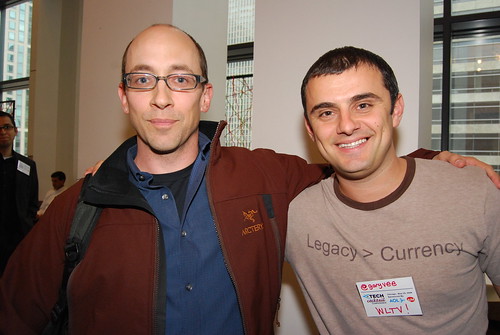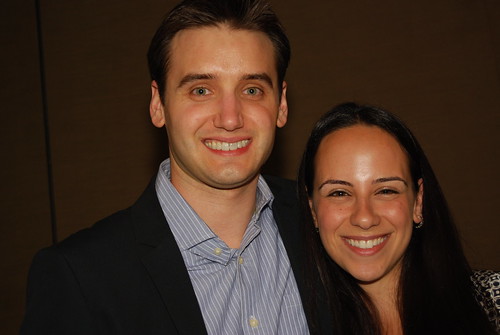The other day Google (GOOG) had it’s earnings call, Google stated that a primary agenda for 2010, in addition to mobile, was display advertising. Yes, you read that right, display advertising. Display? Yahoo 2.0? After the call one had to think about how non-targeted and potentially wasteful advertising spend could potentially be harmful to corporate profitability as some people might try display that aren’t appropriate for display (and could do far better just creating quality content to be indexed in organic search). The promise of the Internet comes from the potential to change organizational structures to be closer to the customer in the way that Peter Drucker would want to increase customer utility and reduce the cost of marketing and sales. I think we have all underestimated the amount of time these changes will take and clearly question whether our society is picking the right leaders to lead these changes.
Obviously one must consider that without true reform of advertising models away from CPM driven page view models how display in 2010 can do nothing to further the goal of lowering costs of marketing and sales for companies and improving our standard of living. CPM can only maximize revenue of an ad network with some residual benefits to publishers. A few days ago I considered writing something about this, but thought this was part of something larger than just Google and their display initiatives in 2010.
Surely, less than 48 hours later, Jason Calacanis started a discussion about comScore that has the Blogoshpere abuzz. Michael Arrington also chimed in (as did a bunch of other people) in his post, Jason Calacanis Punches Comscore In The Face. Comscore Punches Back. Fred Wilson Drags Us Into It. $SCOR” rel=”bookmark” href=”http://techcrunch.com/2010/01/24/comscore-calcanis-wilson-punch-face/”>Jason Calacanis Punches Comscore In The Face. Comscore Punches Back. Fred Wilson Drags Us Into It. $SCOR.The buzz around Jason and his conversation is ultimately about symptoms of the current ecosystem, not the root causes of the future end game. While the conversation about the current state is certainly an interesting conversation to observe, it’s not the conversation I wish to take to the next level. We need to have a different conversation. There is so much more to achieve and limited marketing resources of companies need to be put to work effectively. There are advertising models of the future to consider where offline, mobile and Internet will collide and will someday make this entire conversation look primitive.
Sure enough reading this post brought me back to the conversation about Google and the worthlessness of poorly targeted and untimely display banner ads. You see there was not one but two large banners on TechCrunch that stood out as irrelevantly served by Google. What were they? They were display banners for a company I had interviewed with to be the CMO of in Spring of 2009 that I would have likely have increased the revenue significantly by now. Unfortunately most CEOs don’t yet fully understand the magnitude of the amount of change that is necessary to transform a company successfully for marketing on the web while improving customer satisfaction and the corporation’s profitability. I had researched them and their competitors back then. I was never a potential customer of the service. So now, a full nine months later, here I am looking at this completely irrelevant ad on TechCrunch of all places (which is completely unrelated to the vertical). Wasteful. Pathetic. Sad. Not something a rational business leader following the rules of being a Gen X CMO where search marketing becomes the top of the strategic process. The first decade of the Internet got us to the batters box to start the game of corporate business strategy transformation, I look forward leading that conversation into the first inning during the next few years. The magnitude of the change and the amount of transformation needed is massive, whether it is a small company or a member of the Fortune 500.
You should read those comments in Michael Arrington’s post and think about their motivations – extremely carefully. You’ll also find a link to Jason’s original post there if you wish to read the full details. The future of not only the Internet, but also the future of business organizational structures and marketing strategy budget direction hangs in the balance.
So my question for Jason Calacanis, Fred Wilson, Michael Arrington and EVERYONE ELSE is the following, “Is it time to stop pretending that offline branding models simply converted online is the future of the advertising? If a world migrated budgets from CPM banner ads to CPA/CPL and other emerging forms, who would really care about unique visitors besides site owners seeking an ego boost? ”
Bonus question for Fred Wilson: Wouldn’t your energy be better spent on funding ideas that move the conversation in the direction of innovation of advertising instead of arguing with Jason about a company you exited long ago? (If you are up for it, I’d like to create those realities with you in start ups in that future arena.)
In the end measurement of the type discussed in Jason’s post only matters in an advertising world based on page view based(CPM) or time sponsored impressions. As in my example above, considerable display advertising occurs in an irrelevant way after the fact. For example, I bought a car last September, I’m still seeing increased banners on the models I considered now – after the purchase. Women planning weddings likely have seen related retargeted banners long after the wedding has occurred, possibly even after the divorce is filed in some cases!!! We must do better.
The convergence of offline, online, search and mobile marketing will require entirely new processes to effectively manage them as it becomes a real-time individual decision marketplace. To me, it will have similarity to the changes I made in the 1990’s at BlackRock, where we created new data, new structures, new standards and created better information for us to create strategic advantages. I actively network with some outstanding nascent start ups, sadly many are ignored as many VCs look for traffic or who is involved rather than focus on revenue models, vision, market size and evidence that there might be paying customers for such a new , disruptive model.
The economy right now is bad, but to state that it is just an economic event is way oversimplifying it. It’s prolonged and drawn out due to the structural effects of the Internet not being managed to corporate advantage effectively. Stated simply, corporations and our society is not allocating resources in an effective manner as it fails to migrate budgets and marketing strategy to the highest ROI activities which attract relevant customers. It’s time for scarce, new and often misunderstood breeds of executives that understand these concepts to be allowed to realign corporations big and small, new and old to these new realities otherwise we will see more corporations destroyed “by doing nothing”. There is certainly a significant cost to tapping new leaders, with new skills to lead organizations into new frontiers in terms of realignment and retraining. However, the costs of doing nothing are far greater to our society as not allocating budgets to the most efficient channels and allowing those decisions to be made by people who understand these new realities is far greater.
All I can ask the both the blogosphere and the world business community is to please stop the bickering about these legacy models so we can move onto the real issue and work ahead – realigning our corporate business strategy and our society to the realities of Industrial Revolution 2.0. It starts with board of directors, CEO, CFO and COO executives asking their CMO and marketing partners the right questions. The journey will be fun.

